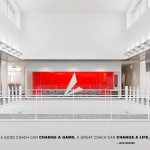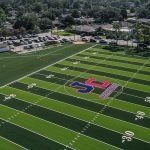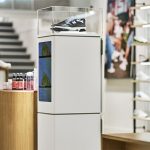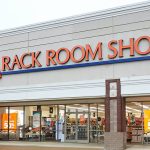China’s largest domestic athletic brand swung to a profit on double-digit sales growth in the first half, but reported more than half its accounts payable remain past due.
Li-Ning Company Limited reported revenues grew 16.1 percent to RMB3.64 billion ($593 mm) during the six months ended June 30, led by its flagship Li-Ning brand, which accounted for 85.9 percent of its revenue during the period. The strong growth, layoffs, a higher mix of direct-to-consumer sales and the reversal of impairment charges taken in prior quarters to reflect a glut of athletic goods put the company in the black.
Many view Li-Ning as a good proxy for gauging the health of China’s sporting goods industry, which has been battling to rein in a glut of domestic products that has also cut into growth of international athletic brands. While the executives said the results show growth of its flagship Li-Ning brand has stabilized, the company’s aging accounts receivables raise concerns amid growing signs that China’s economy is slowing. The latest such sign was the Chinese government’s decision Wednesday to allow the value of the renimbi fall against the dollar for the first time in years amid a rout in Chinese stock prices.
On Thursday, Li-Ning assured investors its businesses had turned the corner since the height of the inventory glut.
“Since the second half of 2014, the business of the Group has entered into a phase of stable growth,” the company reported. “Both the tag price of trade fair orders from distributors and same-store sales of self-operated stores registered a year-on-year growth.”
Li-Ning brand resumes stable growth
Sales of the Li-Ning brand grew 17.0 percent to RMB3.13 billion ($510 mm), or 85.9 percent of the Group’s total revenue in the first half. Sales of Li-Ning branded Footwear, Apparel and Equipment grew 21.4, 12.5 and 13.9 percent respectively compared with the first half of 2014.
Sales to franchised distributors dropped to 51.3 percent from 55.7 percent of the Li-Ning brand's revenue, while sales by Li-Ning-operated retail locations increased 130 basis points to 39.6 percent of sales. Direct e-commerce sales grew from 3.9 to 7.0 percent of sales amidst a national boom in online shopping.
Cost cutting, impairment reversals boost profits
Gross margin at the Li-Ning brand inched up 20 basis points to 45.3 percent as a higher mix of direct-to-consumer sales, the reversal of inventory impairment provisions and the clearance of obsolete inventory more than offset higher labor and material costs.
Li-Ning brand’s distribution expenses plummeted 930 basis points to 39.6 percent of net sales as the company slashed advertising and marketing and plowed the savings into product development and new stores. The company took its administrative expense ratio down a whopping 1,190 basis points to 4.9 percent by slashing spending on staff, management consulting fees, office rent and reducing stock options to senior executives. The biggest improvement, however, was attributed to reversing a provision for impairment of accounts receivables and the absence of non-recurring charges recorded a year earlier.
Delinquent accounts remain high
Li Ning said customer payment continued to improve in the first half, when it reversed RMB50.9 million ($8 mm) in impairments to accounts receivable compared to writing off RMB92.1 million ($15mm) in the year earlier period. The company reduced its allowance for impairment of accounts receivable to RMB545.6 million ($89 mm) or to 29.3 percent of past due accounts receivables compared with 32.1 percent at the end of 2014. At quarters end, half of trade receivables were past due, down from 55.7 percent at the end of 2014.
All this enabled the Li-Ning brand to generate EBITDA of RMB139.9 million ($23 mm) compared with a loss of RMB449.8 million a year earlier.
The company said trade fair orders for the first quarter of 2016 for all its brands grew in the mid-teens over year earlier levels and that it plans to continue to focus on cutting costs while invest in the Internet to keep up with Chinese consumers rapidly changing shopping behavior.
The company will also focus on a more differentiated market positioning for its products by implementing a market segmentation strategy targeting Sports Enthusiasts and Sports Life consumers.















